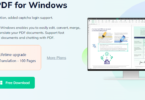Communication is the process of sharing messages and information. It is an integral part of any relationship, be it professional or personal, as it helps to build a strong understanding between two parties.
As project managers, one of our fundamental responsibilities is to communicate effectively with clients about the work that we are doing for them. This helps keep them in the loop about what’s going on with their projects and builds trust and respect between them and us.

One helpful communication tool that can help you improve your client interactions is the changelog. A changelog contains a detailed record of all changes made to a software product over time. It can become an invaluable resource for you and your clients when used correctly.
What is a Changelog?
A changelog is simply a log or record of the changes made to a project. This can be anything from a website or software application to a book or document. A changelog can be either internal for the team working on the project or external for the users or customers.
The purpose of a changelog is to help keep track of the changes made over time and to provide transparency about what has been changed and when. This can be especially useful when multiple people are working on a project or when a project is updated frequently.
Changelogs can also be helpful in troubleshooting, as they can provide a history of the changes that have been made. In general, changelogs are essential to any project and can help ensure everyone is always on the same page.
How to Improve Communication With Clients By Using Changelog?
As a business professional, you are likely always seeking new ways to improve efficiency and optimize productivity. One way to streamline processes is to utilize a changelog system when communicating with clients.
A changelog is simply a log or record of changes made to a project and can be incredibly beneficial in providing clarity and transparency for you and your clients. Let’s look at a few key ways using a changelog can help improve client communication.
Reduce the Number of Back-and-Forth Emails
If you’ve ever worked on a project with a client, you know that email threads can quickly become overwhelming and inefficient. Utilizing a changelog can avoid cluttered inboxes and save time by cc’ing relevant parties on specific entries rather than entire email chains.
Not only will this reduce the amount of time spent sifting through emails, but it will also allow your clients to reference specific changes or updates easily.
Increase Efficiency When Discussing Changes
When changes need to be made to a project, it can often be challenging to explain them clearly and concisely via email or phone. However, by using a helpful changelog tool, you can provide visual documentation that eliminates any confusion and streamlines the discussion.
You can include additional information such as timestamps, author initials, and links for more context.
Improve Transitions During Handoffs
There will inevitably be times when projects need to be handed off from one team member to another. This transition can often be rocky due to miscommunication or lack of clarity regarding recent changes.
However, if you have been utilizing a changelog throughout the project lifespan, the handoff process will be much smoother since all team members will have visibility into prior changes. Simply provide the new team member access to the changelog, and they’ll be up-to-speed in no time!
The Benefits of Using a Changelog
As project managers, there are many benefits to using the changelog. Some of the key advantages that it offers include the following:
- Helps Track Changes: One of the main benefits of using a changelog is that it helps track changes. This can be helpful when you need to undo a change or return to a previous version. It can also help debug purposes. You can narrow down when an error was introduced and fix it much easier by tracking changes.
- Prevents Any Confusion or Errors: Changelogs help prevent confusion or errors because they document all changes made to a project. This documentation can be helpful for new developers who are just joining a project and software users who need to know what has changed.
- Helpful for Debugging Purposes: Changelogs can help debug purposes. By knowing precisely what was changed and when you can more easily identify when an error was introduced and fix it accordingly.
- Help Document New Features: In addition to documenting changes, changelogs can be used to document new features. This documentation can be helpful for users who want to know what new features have been added and how to use them.
- Help Improve Communication: Changelogs can also help improve communication among team members. By documenting all changes made to a project, team members can more easily stay up-to-date on what others are working on. This improved communication can help avoid conflicts and make collaboration more efficient overall.
Tips for Using a Changelog Effectively
While using a changelog is a great way to effectively communicate product changes to your users, there are some essential things you should keep in mind. Some of the top tips for using changelog effectively are described below:
- Make sure you always have a changelog available to your clients and team members. This will allow them to access it at any time and see changes that have been made or new features added to their projects. You can do this by making regular updates to the changelog and publishing these updates on your company’s website, sending an email newsletter about these updates, or creating a blog post about them.
- In addition to ensuring that you regularly update the status of your projects in the changelog, you should also make sure to document all of your team members’ contributions there. This will help them receive recognition for their work and help your clients understand what each person is contributing to their projects.
- You should also try only to include meaningful changes or additions to your changelogs. Making every small change or update can clutter the document, making it difficult for others to find the information they need quickly and easily. Instead, focus on providing concise summaries of significant changes and additions so that readers will better understand these changes without having to sift through all of your updates.
As project managers, we are responsible for improving our communication with clients using tools like changelog. By keeping them informed about all changes to their projects, showcasing our work, and sharing information about any challenges we face, we can ensure that our client’s trust, respect, and appreciate the work we do for them.







Leave a Comment
You must be logged in to post a comment.